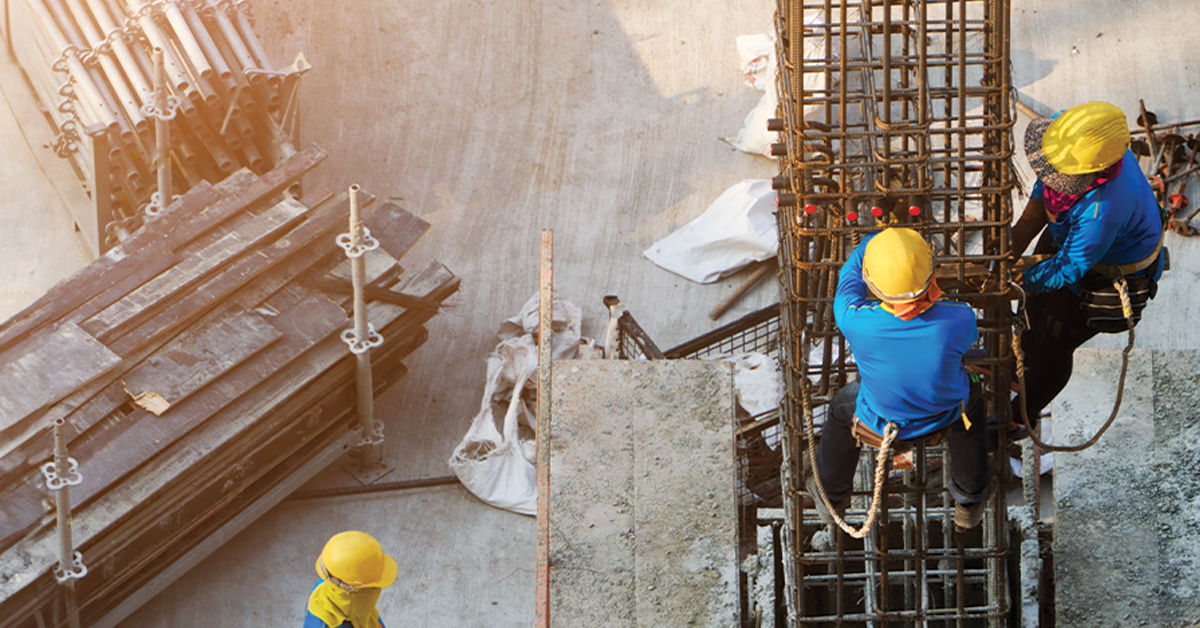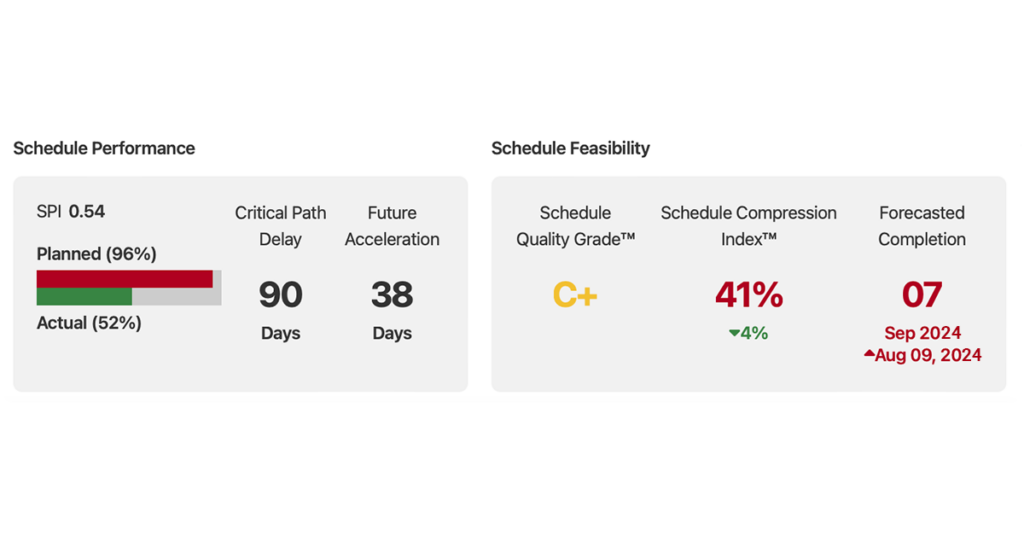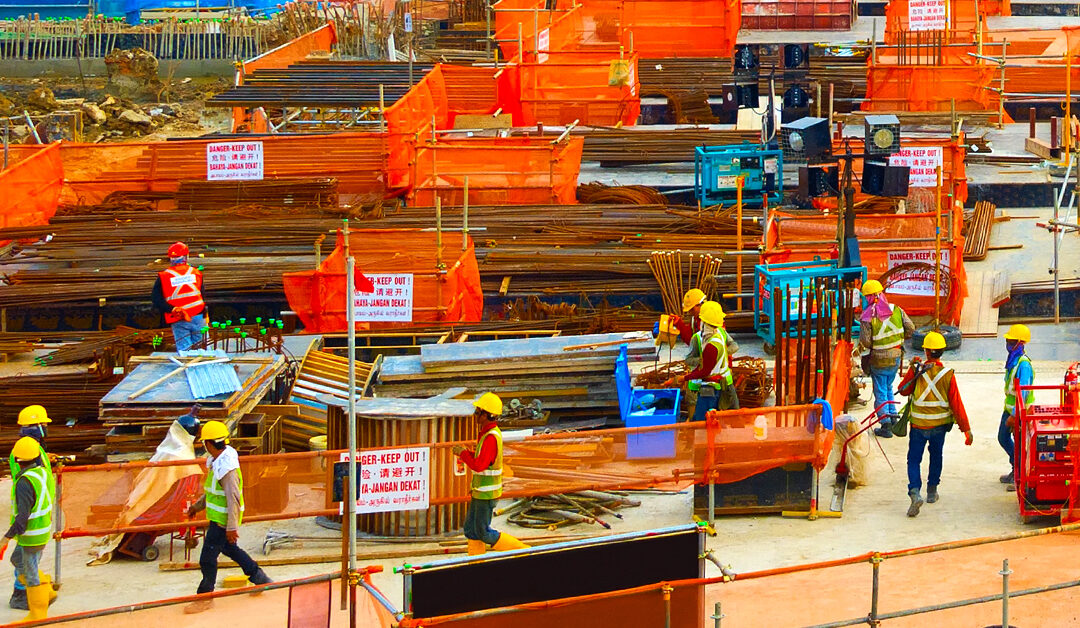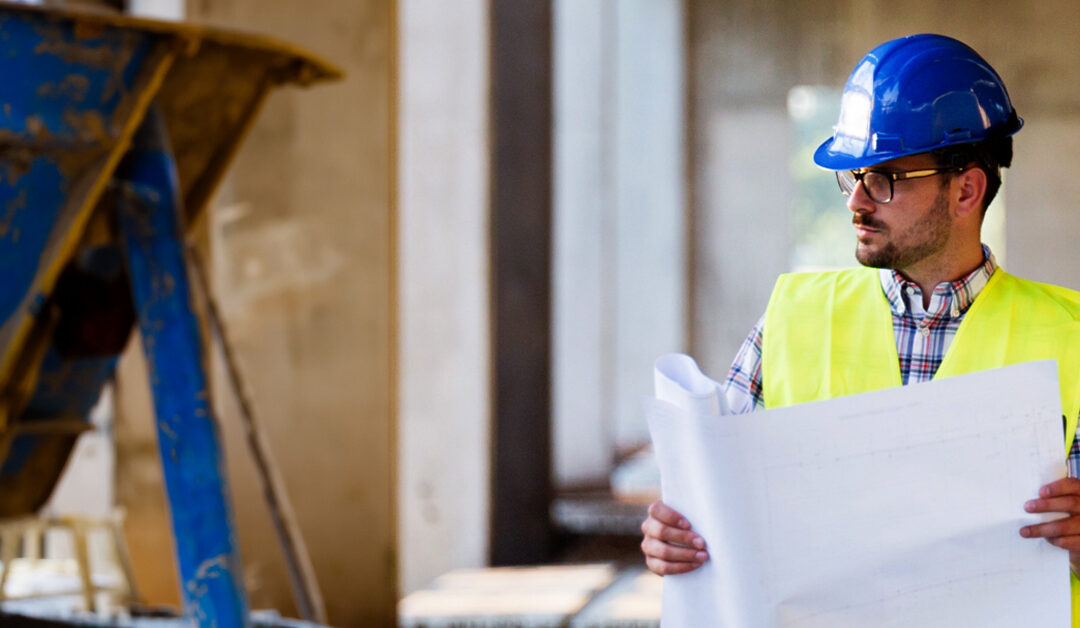Making sense of all of your data from all of your projects can feel like trying to understand a foreign language. But, when we break it down into steps, it starts to make a lot more sense.

- News
Overcoming Confirmation Bias in Construction Project Management
Effective project and schedule management is critical for the success of any construction project. These management tasks are complex, requiring a blend of technical skills, experience, and soft skills. Yet, there’s a psychological element that’s overlooked but significantly influences project outcomes: confirmation bias.
Confirmation bias is the tendency to favor information that aligns with our existing beliefs while ignoring information that doesn’t. In the high-pressure environment of commercial construction, where every decision can have substantial impacts, succumbing to confirmation bias is easier than many realize.
The Nature of Confirmation Bias
WebMD defines confirmation bias as “the human tendency to only seek out information that supports one position or idea.” It is a common psychological tendency that affects how we gather, interpret, and remember information. It causes people to give more weight to evidence that confirms their existing beliefs. Then, subsequently undervalue, ignore, or disprove evidence that contradicts their beliefs.
For example, let’s say you believe the earth is flat. If you went looking for sources to justify that position, then that’s all you will be looking for. Thus, it’s all you will find. What’s more, despite the fact that the earth is, in fact, round, there is no shortage of sources that will claim otherwise. In short, if you want data or an expert opinion to confirm even the most nonsensical theory or position, it’s not hard to find.
This bias can be particularly problematic in project and schedule management, where decisions must be based on accurate and comprehensive information.
Implications in Commercial Construction
There are any number of ways that confirmation bias can rear up and throw a major wrench into a project’s progression – or worse.
Inaccurate Scheduling
It’s commonplace to overestimate the speed it takes to perform certain tasks based on past successes. Potential delays can be ignored or past delays might be hidden, overshadowed by success. Those past successes may have occurred on projects where nothing went wrong, and no unforeseen problems arose – the perfect definition of an “outlier.” Basing any schedule on events that happen so rarely can easily lead to unrealistic schedules and missed deadlines.

Budget Overruns
Confirmation bias can cause the overlooking of potential cost overruns. This is especially true when a budget has been sufficient based on past projects. Of course, this may not account for any increases in the cost of materials or labor since the other projects were delivered. After all, the longer the time between projects, the greater the chance of increases. The result can cause financial strain or compromises in quality.
Safety Risks
Overlooking or downplaying safety risks because of a belief in the infallibility of certain practices or equipment can lead to dangerous work environments. Safety is an area where confirmation bias can have the most disastrous effects, leaving workers open to all manner of potential dangers. The overarching problem is that human error can lead to catastrophes even with the best policies, procedures, and equipment in place; skimping on any of those items raises the probability of a mishap exponentially.
Incident Investigations:
According to an article on LinkedIn regarding construction safety and cognitive bias, a construction team may investigate the root causes of a safety incident. If there is a pre-existing belief about the primary cause, team members may focus on information that confirms this belief while neglecting alternative explanations. This confirmation bias can hinder a thorough understanding of the incident and prevent the implementation of effective preventive measures that can guard against a future occurrence.
Resistance to Innovation
A preference for familiar methods and skepticism towards new techniques or technologies can hinder progress and efficiency. Virtually everyone has heard the old adage, “That’s the way we’ve always done it.” Change comes slowly in many industries, and construction is one of the slowest. Even if the way things are done is not the most efficient or the most productive, many professionals find comfort in familiarity.
Real-World Examples
In several high-profile construction failures, confirmation bias has definitely played a role. Ignoring warning signs of structural weaknesses or logistical issues…. Believing plans were foolproof…. These oversights have led to delays, increased costs, and, in some cases, catastrophic failures. Here are some of the most high-profile examples.
The Leaning Tower of Pisa
Though obviously not a recent project, the construction of the Leaning Tower of Pisa is a historical example where early warning signs of foundation issues were possibly ignored due to the builders’ confidence in their design and construction methods. The ground beneath the tower was not sufficiently investigated for its ability to support the structure’s weight, leading to its famous tilt. Over the centuries, extensive work has been required to stabilize the tower and prevent its collapse.

The Big Dig (Central Artery / Tunnel Project, Boston:
This project, one of the most complex and costly highway projects in the U.S., suffered from massive budget overruns and delays. One aspect of confirmation bias was underestimating the project’s complexity and costs, with early warnings from critics and experts about potential issues being downplayed or ignored.
The project’s budget ballooned from an initial estimate of $2.8 billion to over $14.6 billion. Additionally, quality control issues led to leaks in the tunnel and a fatal ceiling collapse in 2006, raising questions about oversight and adherence to safety standards.
Denver International Airport Baggage System
Initially intended to be the most advanced automated baggage system in the world, the project faced significant delays and cost overruns, partly due to the ambitious nature of the technology being implemented without sufficient testing. Confirmation bias contributed to the project’s challenges, as project managers and stakeholders continued to push forward with the original concept despite numerous technical issues and warnings from experts about the system’s feasibility and reliability. The system was eventually abandoned after the airport’s opening was delayed by 16 months, and additional costs amounted to hundreds of millions of dollars.
Strategies to Mitigate Confirmation Bias
1. Diverse Teams
Encouraging team diversity can bring multiple perspectives, reducing the likelihood of groupthink and confirmation bias. The diversity can take many different forms, as teams can include workers with varying degrees of experience on a wide spectrum of projects; workers who have come from other construction companies and can bring new methods to the table; and people who tend to embrace innovation.
2. Encouraging Skepticism
Promote a culture where questioning and skepticism are valued. Encourage team members to challenge assumptions and provide evidence for their claims. Having a group of “yes” individuals might create a positive feel in the work environment, but in the long term, the failure of the team to deliver the project on time and on budget will produce far more negativity.
3. Regular Review Processes
Implement regular and rigorous review processes where schedules, budgets, and safety protocols are reassessed. The fact is, you can never check your work or your schedule too many times. But it’s also crucial to review these items with an open mind; if one of them is sending a warning that something may be off, don’t try to ignore or sugar-coat it. Instead, believe it.
4. Training and Awareness
The funny thing about bias – any kind of bias – is that many people don’t even know they engage in it until it’s pointed out to them. It may be unconscious, or it may even be that some people don’t even know what confirmation bias is or that it even exists. Educate staff about confirmation bias and its impact. Training can help individuals recognize and counteract their biases.
5. Feedback Mechanisms
Establish clear channels for feedback and concerns. Encourage workers at all levels to speak up if they notice potential issues. Too many companies claim they want their people to speak up, but then those people get shut down, dismissed, or even chastised when they offer input. Don’t just present opportunities for workers to voice their opinions; create a safe environment where workers believe that honest criticism is valued.
Building a Culture of Openness and Critical Inquiry
Confirmation bias in construction project and schedule management can lead to a range of problems, from minor inefficiencies to major project failures – even lapses in worker safety. By understanding and actively working to mitigate this bias, project managers and teams can make better decisions, leading to safer, more efficient, and more successful construction projects. The key is to foster an environment in which questioning and evidence-based decision-making are the norms, not the exceptions.
RELATED STORIES

Making Construction Data Analytics Easier to Understand
Making sense of all of your data from all of your projects can feel like trying to understand a foreign language. But, when we break it down into steps, it starts to make a lot more sense.

Top Construction Scheduling Software in 2023
SmartPM’s recognition as a top construction scheduling software in 2023 attests to the immense value in automated project controls.

Putting the ‘Smart’ in Project Management with Project Controls
Project controls are not just a subset of project management; they are its backbone, focusing on meticulous monitoring and analysis.

The Top 5 Breakdowns in Construction Schedule Management
Schedule management involves navigating a complex landscape of risks that can significantly impact project budgets and timelines.

